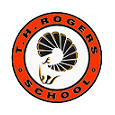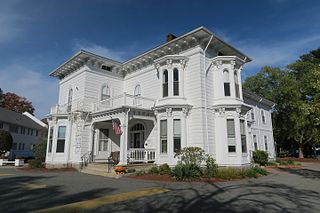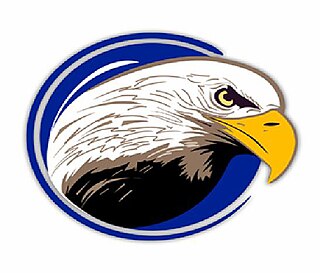
John Parmenter Robarts was a Canadian lawyer and politician who served as the 17th premier of Ontario from 1961 to 1971. He was a member of the Progressive Conservative Party of Ontario.

Franco-Ontarians are Francophone Canadians that reside in the province of Ontario. Most are French Canadians from Ontario. In 2021, according to the Government of Ontario, there were 650,000 Francophones in the province. The majority of Franco-Ontarians in the province reside in Eastern Ontario, Northeastern Ontario, and Central Ontario, although small francophone communities may be found in other regions of the province.
Gary Malkowski is a former Canadian provincial politician. He represented the riding of York East in the Legislative Assembly of Ontario from 1990 to 1995, as a member of the Ontario New Democratic Party (NDP). He was Canada's first deaf parliamentarian, and the first deaf parliamentarian in the world to address a legislature in a sign language, specifically American Sign Language. He was formerly a table tennis player who went onto represent Canada at the Deaflympics in 1977 and 1985.

The Ministry of Education is the ministry of the Government of Ontario responsible for government policy, funding, curriculum planning and direction in all levels of public education, including elementary and secondary schools.

Quebec Sign Language is the predominant sign language of deaf communities used in francophone Canada, primarily in Quebec. Although named Quebec sign, LSQ can be found within communities in Ontario and New Brunswick as well as certain other regions across Canada. Being a member of the French Sign Language family, it is most closely related to French Sign Language (LSF), being a result of mixing between American Sign Language (ASL) and LSF. As LSQ can be found near and within francophone communities, there is a high level of borrowing of words and phrases from French, but it is far from creating a creole language. However, alongside LSQ, signed French and Pidgin LSQ French exist, where both mix LSQ and French more heavily to varying degrees.

Thomas Horace Rogers School is an alternative primary and secondary public school and part of the Houston Independent School District. The school is at 5840 San Felipe in Houston, Texas, United States, outside of the 610 Loop and inside Beltway 8, west of Uptown Houston.

The Learning Center for the Deaf (TLC) is a Framingham, Massachusetts-based non-profit organization and school serving deaf and hard-of-hearing children and adults. The mission of The Learning Center for the Deaf is to ensure that all deaf and hard of hearing children and adults thrive by having the knowledge, opportunity and power to design the future of their choice.
Bilingual–Bicultural or Bi-Bi deaf education programs use sign language as the native, or first, language of Deaf children. In the United States, for example, Bi-Bi proponents state that American Sign Language (ASL) should be the natural first language for deaf children in the United States, although the majority of deaf and hard of hearing being born to hearing parents. In this same vein, the spoken or written language used by the majority of the population is viewed as a secondary language to be acquired either after or at the same time as the native language.

Rochester School for the Deaf (RSD) is a private, tuition-free school for deaf and hard of hearing students to attend in Rochester, New York. It is one of the oldest and most respected preK-12th grade schools for children with hearing loss and their families in the United States, and one of nine such school in the state of New York. Serving the Central and Western portions of New York State, it has been educating students since 1876.

The Ernest C. Drury School for the Deaf is a provincial school in Milton, Ontario, Canada with residential and day programs serving elementary and secondary deaf and hard-of-hearing students.

Marlton School is a KG–12 public special school for the deaf and hard of hearing students in Los Angeles, California, United States. It was established in 1968 and is part of the Los Angeles Unified School District.

Deaf education is the education of students with any degree of hearing loss or deafness. This may involve, but does not always, individually-planned, systematically-monitored teaching methods, adaptive materials, accessible settings, and other interventions designed to help students achieve a higher level of self-sufficiency and success in the school and community than they would achieve with a typical classroom education. There are different language modalities used in educational setting where students get varied communication methods. A number of countries focus on training teachers to teach deaf students with a variety of approaches and have organizations to aid deaf students.

The Sir James Whitney School for the Deaf is a provincial school in Belleville, Ontario with residential and day programs serving elementary and secondary deaf and hard-of-hearing students.
The Manitoba School for the Deaf is a provincial school in Winnipeg, Manitoba with both residential and day programs serving deaf and hard-of-hearing students.
The Newfoundland School for the Deaf was a provincial school in St. John's, Newfoundland and Labrador with both residential and day programs serving deaf and hard-of-hearing students.
The Alberta School for the Deaf is a provincial school in Edmonton, Alberta with elementary and secondary residential and day programs serving deaf and hard-of-hearing students.

The British Columbia School for the Deaf is a provincial school in Burnaby, British Columbia with day programs serving deaf and hard-of-hearing students. The school teaches secondary students. It serves around 50 students and shares a campus with Burnaby South Secondary School for hearing students.
Kendall Demonstration Elementary School (KDES) is a private day school serving deaf and hard of hearing students from birth through grade 8 on the campus of Gallaudet University in the Trinidad neighborhood of Washington, D.C. Alongside Model Secondary School for the Deaf, it is a federally funded, tuition-free demonstration school administered by the Laurent Clerc National Deaf Education Center at Gallaudet University.

47 The American Sign Language and English Secondary School, is a public high school for the deaf in Kips Bay, Manhattan, New York City. Operated by the New York City Department of Education, it was previously known as "47" The American Sign Language and English Dual Language High School, Junior High School 47M, School for the Deaf, or Junior High School 47.
The Canadian Association of the Deaf estimates that there are over 350,000 Deaf Canadians, but there is not an exact number since there has never been a formal census on Deaf Canadians. There are approximately 1.2 million Indigenous people and over 750 reserves in Canada. There are various intersections of deaf and Indigenous culture, including valuing community, rooting their identity in their culture and its associated group instead of their individuality, having their identities oversimplified, being underrepresented in research and data collection, and experiencing health inequities due to their identities. There is limited research on Deaf Indigenous people, but the Saskatchewan Human Rights Association argues that issues faced by Deaf people are exacerbated when that person is also Indigenous.













